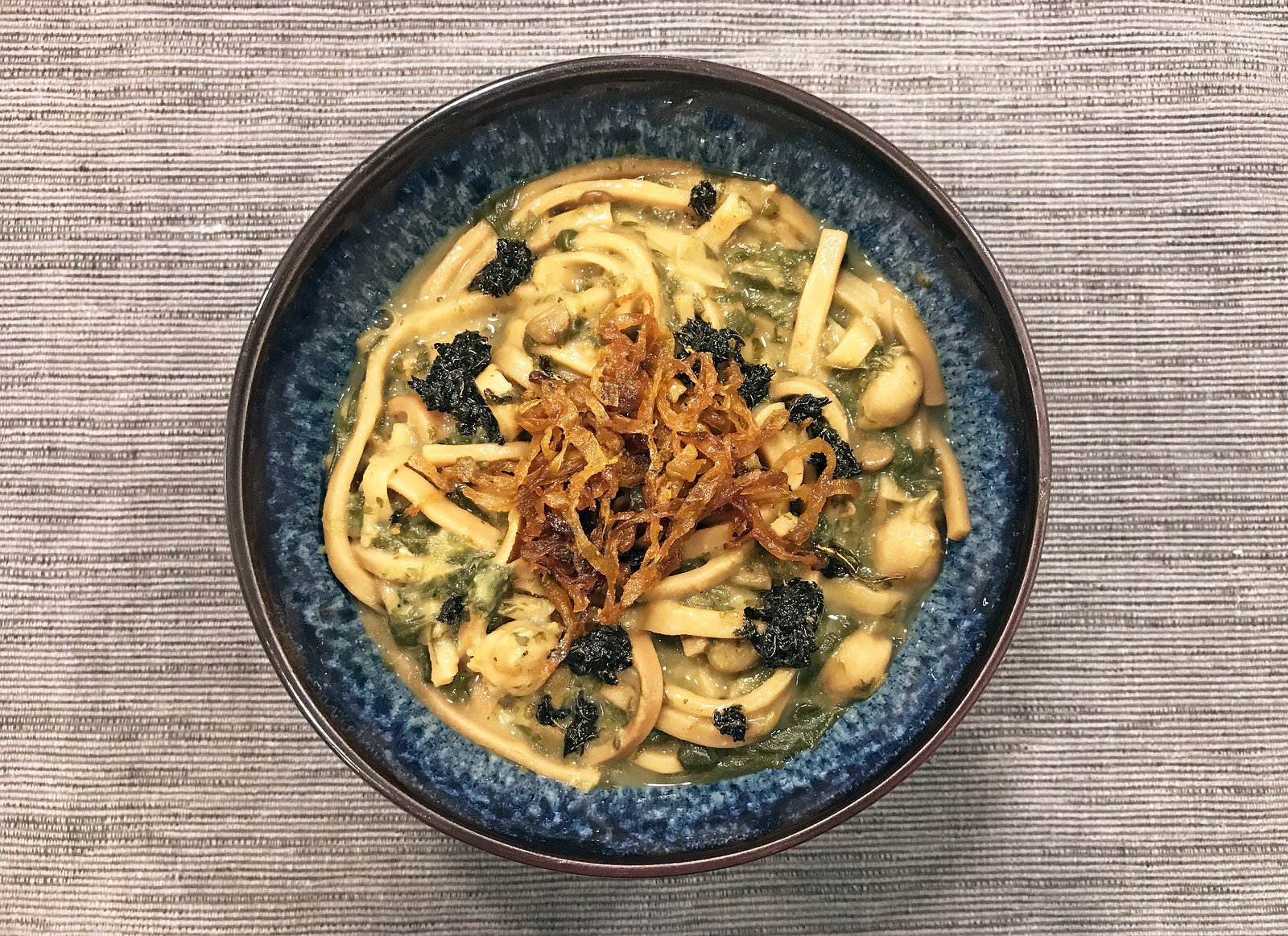This is comfort food for every diaspora Iranian kid growing up. Fragrant rice and tart barberries become more the sum of its parts. The best part? Spooning the lime and caramelized onion-inflected chicken sauce over the rice and letting all of the sweet-sour-salty flavors meld.
Dried barberries can be hard to find, but they’re worth seeking out as any Iranian grocer will carry them. Try to use aged basmati rice here, which will produce a fluffier, more aromatic dish.

Ingredients:
For the saffron chicken:
2 teaspoons olive oil
2 pounds boneless, skinless chicken thighs
1 1/2 teaspoons salt
1 teaspoon pepper
1 teaspoon turmeric
1/4 cup lime juice
2 onions, peeled and chopped
2 cloves garlic, peeled
1/2 teaspoon ground saffron dissolved in 2 tablespoons hot water
For the rice:
3 cups basmati rice
2 tablespoons salt
1/2 cup olive oil
2 tablespoons yogurt
1/4 cup slivered almonds
1/4 cup slivered pistachios
For the barberry mixture:
2 tablespoons olive oil
2 cups dried barberries, picked over, washed, and drained
2 teaspoons sugar
1/4 cup water
1 teaspoon ground saffron dissolved in 2 tablespoons hot water
1. To cook the chicken: In a medium saucepan, heat the oil over medium-low heat. Add the onions and saute until lightly browned, about 8 minutes. Add the chicken cook, turning, once, until lightly browned, about 5 minutes. Add the rest of the ingredients, give the pan a stir, and cover. Cook over low heat for about 1 hour and 30 minutes.
2. To cook the rice: Wash the rice in a large container and cover it with water. Agitate gently and pour off water, repeating 3 or 4 times until the water is clear. Bring 8 cups water and 2 tablespoons salt to a boil in a large pot. Add the rice and boil briskly for about 6 to 10 minutes, stirring a couple of times to loosen any grains that may have stuck together or to the bottom of the pot. When the rice feels just al dente, it is ready to be drained. Drain the rice in a fine-mesh colander and rinse with cold water.
3. In a large bowl, whisk 1/4 cup oil 1/4 water, yogurt, a few drops of saffron water, and 3 spatulas of rice. Spread the mixture evenly over the bottom of the pot.
4. Arrange the remaining rice in a pyramid shape in the pot, adding one spatula of rice at a time. Cover and cook for 10 minutes over medium-high heat.
5. Mix the remaining oil with 1/2 cup water and pour over the rice. Pour the remaining saffron water over the rice. Add the pistachios and almonds on top. Wrap the lid of the pot with a thin, clean dish towel and cover firmly to prevent steam from escaping. Cook for 60 to 70 minutes longer over low heat.
6. To cook the barberries: In a skillet, combine the oil, barberries, sugar, water, and saffron water. Saute over medium heat for 5 minutes, watching carefully to make sure the barberries don’t burn. Set aside.
7. Remove the rice from the heat and carefully pour run the outside of the bottom of the pot under cold water. This helps to release the tahdig, or crust, from the bottom of the pot. Allow pot to cool, covered, for 5 minutes.
8. To assemble the rice, take 1 spatula full of rice and place it on a serving platter in alternating layers with the barberry mixture. Arrange the chicken around or next to the platter. Detach the tahdig and serve on the side.




